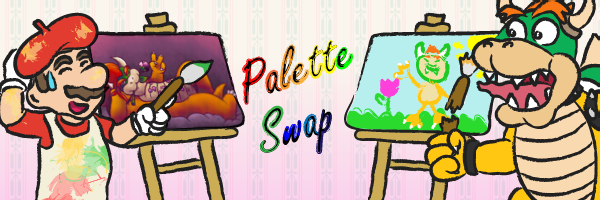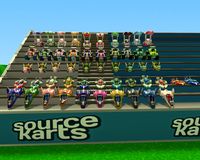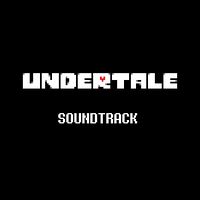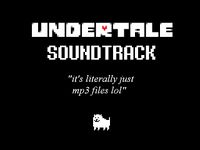Director's Notes
Happy January, everyone! Hope y’all are looking forward to this month’s issue!
We have another new section for you all this month: Time Turner (talk) is writing Game Soundtrack Reviews, and to kick off his new column, he’s prepared a very special review for everyone to read.
Our art contest is still going strong, so check in below and keep your calendars handy with the deadline!
Definitely keep your eyes on this space, next month we’ll be starting two new contests for the Mini-Special issue! I’m very excited to share all the details with you then!
~FunkyK38
Tropical Freeze Art Contest
The art contest is still going strong on the forums! Remember, you still have until January 26 to turn in an entry before voting starts!
Section of the Month
For the first time in a long time, we have a new winner! Baby Luigi (talk) has taken the top spot with the brand new “Game Mods!” Congratulations, and be sure to read her section again this month!
| Palette Swap SECTION OF THE MONTH | ||||
|---|---|---|---|---|
| Place | Section | Votes | % | Writer |
| 1st | Game Mods | 14 | 45.16% | Baby Luigi |
| 2nd | 8-Bit Amphitheater | 5 | 16.13% | Stooben Rooben |
| 3rd | Composer Spotlight | 4 | 12.9% | Crocodile Dippy |
| 4th | The Adventures of Little Mario | 3 | 9.68% | Walkazo |
| 5th | What’s on the Box? | 2 | 6.45% | Yoshi876 |
| 6th | Featured Sprite | 1 | 3.23% | FunkyK38 |
| 6th | Community Advertisements | 1 | 3.23% | Baby Luigi |
| 6th | Mario's Boombox | 1 | 3.23% | Walkazo |
Time Turner talks about the music of the game everyone’s been talking about!
[read more]
Game Mods
Written by: Baby Luigi (talk)
Hello everyone! I want to wish you all a happy 2016, and I hope 2016 will bring more surprises and fun stuff than 2015 had. We all wish that, but we're optimists, and being optimistic is being good, right?
Right now, one of my New Year's Resolution is to bring this month's section of Game Mods right to ya. This time, it's from a PC game, where you can easily make mods for it, thanks to the local modding community. It's a Steam game called Garry's Mod. Garry's Mod is the true definition of a sandbox game. There's no literal objective, and the game content it comes with is scant unless you own games or their content that will give you access to their objects. Around 99% of what you'll want in Garry's Mod is generated by the fans, from more ragdolls to pose scenery with, to drivable cars and planes, to new tools scripted via understanding of coding, to complete game modes. Garry's Mod is incredibly popular, and houses the most add-ons out of any workshop on Steam, with, as I now speak, a whopping count of nearly 800,000 different add-ons. Most definitely, you'll probably find an add-on that you'll like!
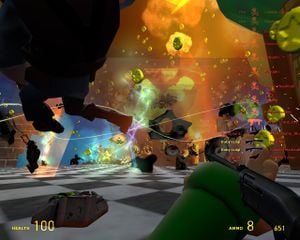
The section of this month will focus on one of those nearly 800,000 add-ons, but it most definitely won't be the last. I'll bring you one of the ones I made, or, at least, I took some part into creating...Mario Kart Wii - Small SCars and Props. Featuring drivable small karts from, uh, Mario Kart Wii.
So here's a little history on the hows and why this add-on was created: at the start, Garry's Mod lets you drive on vehicles. However, a fellow named Sakarias88 didn't like the original vehicles that are provided with Garry's Mod, so he coded a new set of cars, called "SCars". These came with headlights, paintjobs, vehicle damage, and a bunch of other customizable features that the original set of cars lacked. After some time, a user named RatchetMario ported a few Mario Kart Wii karts into Garry's Mod, which were only props; this gave another user, named Matchy, an idea to port the Mario Kart Wii karts and make them drivable SCars. Only three were created at the time: the Standard Kart M, Classic Dragster, and Wild Wing. It's hardly representative of the entire selection of karts from Mario Kart Wii, and people often asked for more. Then came along, uh, me.
I've created the small class of karts first because, as always, things being Baby Luigi-related tend to be my guinea pig when experiencing new territories of mods. I've ripped the small karts from my Mario Kart Wii ISO, but I had to fix the UV maps because the UVs were mirrored rather than repeated, screwing some things up, and that required editing via Maya. Then, you have to edit some of the individual .lua files to determine where you want the exhaust coming from, as well as wheel placements, headlights, seat position, and damage smoke position. This is easily do-able with any 3D model program that can pinpoint locations, though the XYZ coordination can be different and require testing to understand where discrepancies come from.
Texture swaps are always easy, even though you have to create proper .vtfs and .vmts for all color schemes. And some karts come with their own colored tires, which adds to it. It's a good thing rigging the model to the skeleton isn't a problem at all; most of the Mario Kart Wii karts come with only one bone, with a few exceptions. For this pack, this includes the Cheep Charger. Some karts also require being pieced together to the best of knowledge, because they come in separate parts: this includes the Tiny Titan and Mini Beast.
The final product is every single small kart from Mario Kart Wii being drivable and wreckable; all you need is the SCars Slim add-on to get them working, as my add-on requires the .lua files and whatnot from that pack in order to function properly. Otherwise, errors galore. Later on, however, people wanted prop versions of the karts, rather than drivable ones, for various reasons. The prop versions are therefore included in this pack to ease posing so you don't accidentally enter the cars while pressing your use key (as "Use" is used to rotate parts), and you don't have to painstakingly change every tire's color to the corresponding vehicle.
This add-on is by far my most popular add-on. It has around 50,000 subscribers at the time of this writing, and it is probably still rising, just not as quickly as it had been when I initially released it. It is the sole reason I obtained the Mega Upload achievement in Garry's Mod, where, in order to obtain it, you need to get 1,000 upvotes on a single add-on. Therefore, demand is very high when it comes to drivable Mario Kart vehicles, and I've made several more, which I will talk about in later 'Shroom issues, gladly. I'm starting to port the Mario Kart Wii bikes as well, so keep on a lookout for those, as long as other things don't distract me first.
You can find more info for my Mario Kart Wii - Small SCars and Props add-on on this page.
Thanks for reading this section! If you own Garry's Mod, you're free to try it out, and you can drop me any thoughts on the comments section of the Workshop page or anywhere else where I can easily read and access.
Ongoing Fan Projects
| User | Thread | Description |
|---|---|---|
| Baby Luigi | Mario and Baby Luigi's Garry's Clustercrowd Pics | A thread where Baby Luigi and Dr. Mario show off some Clustercrowd screenshots that they have taken in Garry's Mod. The most recent updates include some seasonal pictures. |
| Popper | Popper's Sprite Art | A thread where Popper shows off some sprites that they have created. |
| Umi Sonoda | Smg2daisy's Gallery | A thread where Umi Sonoda shows of some drawings that she has done. The most recent update is a seasonal picture. |
| Aria no Yami | Chibiki's digital stuffs (and things) | A thread where Aria no Yami shows off some desktop wallpapers that they have created. |
| Spike Spiegel | The Mariofan Draws Things Thread | A thread where Spike Spiegel shows off some drawings that they have done. The recent updates includes pictures relating to Steven Universe. |
| Niiue | Niiue's Sprites | A thread where Niiue shows off some sprites that he has created. Recent updates include Super Mario World 2: Yoshi's Island sprites and Super Mario Bros. 2 sprites. Some original ones have all been created by Niiue. |
| Yoshin | Yoshin's Custom Yu-Gi-Oh Cards [large images warning] | A thread where Yoshin shows off some Yu-Gi-Oh cards that they have created. |
| Lord Vader | Meta Knight's art thread-With Undertale portraits | A thread where Lord Vader shows off some pictures that he has drawn. The current drawings are of Pokémon and users as Undertale characters. |
| FunkyK38 | The 'Shroom Art Contest~ DKC: Tropical Freeze Edition | A thread where the entries of The 'Shroom Art Contest can be viewed. |
| The Pyro Guy | The Pyro Guy's 3D art thread (with some 2D thrown in) | A thread where The Pyro Guy shows off some creations he's made in Blender. Recent updates include a small comic on his feelings of Bayonetta's inclusion in Super Smash Bros. for Nintendo 3DS / Wii U and his new look. |
| Ashley Ash Satoko and Maria Renard | Pwwnd123's Spriting Work | A thread where Ashley Ash Satoko and Maria Renard shows off some sprites thay they have created. |
| The Pyro Guy | How the wiki was probably actually created. Sign ups closed, cameos available! | A comic being created by The Pyro Guy showing the creation of the wiki. |
Community Advertisements
Written by: Baby Luigi (talk)
Not even the Hero of Time can handle this much characters at once. I spy Alph, Baby Luigi, Plessie, Koops, and Koopa Kid.
Mario's Boombox
Welcome back to Mario's Boombox! To kick off 2016, we're going to take a look at one of the most informative songs about Russian history since "Rasputin" was dropped by Boney M. in 1978: "A Complete History of the Soviet Union Through the Eyes of a Humble Worker, Arranged to the Melody of Tetris", by the band Pig with the Face of a Boy. The song and the excellent accompanying music video can be found here, on YouTube. It's not the first time words have been added to the Tetris theme, but with all due respect to Brentalfloss, DaCaV5, and whoever wrote the original 19th century Russian folk song that the melody's taken from, this one's the best. The lyrics were provided on the band's blog, but here they are again, with commentary about the real-life history behind the words. Learning is fun!
To Moscow I came seeking fortune
But they're making me work til I'm dead
The bourgeoisie have it so easy
The Tsar's putting gold on his bread
The people of Moscow are hungry
But think what a feast there could be
If we could create a socialist state
That cared for the people like me:
Here, the bourgeoisie are the upper-middle class whose societal concerns revolve around money and property, and who use their control over law and enforcement to exploit the laborers beneath them. As a result of this capitalism, folks like the tsar (supreme ruler, in this case, of Russia) lived in decadence while the commoners barely scraped by. By contrast, socialism would shift the power and control to the workers, and ensure everyone gets a fair slice of the pie rather than the folks selling the pies keeping the pie money all to themselves. Or something like that, it's pretty complicated.

I am the man who arranges the blocks
That descend upon me from up above.
They come down and I spin them around
Til they fit in the ground like hand in glove.
Sometimes it seems that to move blocks is fine
And the lines will be formed as they fall -
Then I see that I have misjudged it!
I should not have nudged it after all.
Can I have a long one please?
Why must these infernal blocks tease?
After the intro, this first regular stanza is just Tetris in a nutshell.
I am the man who arranges the blocks
That continue to fall from up above.
Come Muscovite! Let the workers unite!
A collective regime of peace and love.
I work so hard in arranging the blocks
But the landlord and taxman bleed me dry
But the workers will rise! We will not compromise
For we know that the old regime must die.
Long live Lenin, kill the tsar!
We salute the sickle and star!
Russia had a couple revolutions in the early 20th century, first in 1905, which ended in defeat, and then two more after World War I, in 1917, collectively known as the Russian Revolution, which ended in victory (hence they get the flashy name). The 1905 one ended in a Moscow-specific worker uprising, so I want to say that this verse is about both it and 1917, given how there were two call to arms in it, and IRL, the 1905 attempt did pave the way for the later one, so a "complete history" should touch on it. The verse also goes beyond 1917, as it mentions the 1918 execution of the abdicated Tsar Nicholas II (and his family, including the famed Princess Anastasia) during the Russian Civil War that followed the revolution. The other name dropped here is Vladimir Lenin, a major driving force behind the revolutions who became the new head of state in 1917, turning the Russian Republic into the Russian Socialist Federative Soviet Republic / Russian Soviet Federative Socialist Republic (in Soviet Russia, name changes you), and going on to win the subsequent civil war and oversee the creation of the Union of Soviet Socialist Republics / USSR / Soviet Union, which he led until his death in 1924. This verse also mentions the [hammer and] sickle and red star, the iconic symbols of communism that were adopted during the revolutions by Lenin ans his pals. "But wait," you say, "I thought the idea was to form a socialist state, not a communist state?" And wellll, that's a tricky subject, so let's have more song lyrics before jumping into that, shall we?
I am the man who arranges the blocks
That continue to fall from up above.
The food on your plate now belongs to the state
A collective regime of peace and love.
I have no choice in arranging the blocks
Under Bolshevik rule, what they say goes.
The rule of the game is we all are the same
And my blocks must create unbroken rows.
Long live Stalin! He loves you!
Sing these words, or you know what he'll do...
Okay, so earlier we learned that socialism means everyone who makes the pie gets a fair share of the pie and/or the pie-selling profits, but now we learn that under the new communist rule, no one personally owns, buys or sells any pie: the state owns it all. You make the pie, and then the state takes the pie and redistributes it to everyone equally, regardless of how much effort they put into the pie, and while that's peaceful and lovely in theory, you can already hear the cracks in the facade in the lyrics. As single-party communist states strive for socialist societies (even calling themselves "socialist states"), power, control and corruption seep in, and you get workers that are housed and well-fed, but ultimately just as exploited by their rulers as they were before. But instead of the tsar, the ruling political party of the Soviet Union was the Bolsheviks, led by Joseph Stalin, who emerged victorious from the politburo power struggles following Lenin's untimely stroke. That's when the real corruption started, since Stalin was basically a ruthless dictator, and the last line is probably alluding to his Great Purge in particular, which saw the imprisonment, deportation or execution of millions of "enemies of the working class", even as he simultaneous repressed the working class himself.
I am the man who arranges the blocks
That are made by the men in Kazakhstan.
They come two weeks late and they don't tessellate
But we're working to Stalin's five year plan.
I am the man who arranges the tanks
That will make all the Nazis keep away
The Fuhrer is dead, and Europe is Red!
Let us point all our guns at the USA.
We shall live forever more!
We can start a nuclear war!
Kazakhstan became a soviet republic in 1936, and lots of people were exiled there by the Great Purge and interred in the Gulag forced labour camps - to inefficiently create the crappy Tetris blocks that don't fit together properly. The song also mentions the five-year plans for the national economy of the Soviet Union (numerous production goals set by the state, some of which were hit, some of which failed), and then moves on to World War II, when the Soviet Union resisted and reversed an invasion by the Nazis, led by their own type of supreme leader, the Führer (i.e. Hitler). As a result of all the ground its army gained from the fascists (extreme right-wing one-party states that are quite proud of the fact that all the pie belongs to them, and will make more pies out of anyone who disagrees), the end of WWII resulted in the USSR expanding its territories and gaining numerous new satellite states, so that most of Europe from mid-Germany eastward were Soviet red. And then came the Cold War, between that USSR-led Eastern Bloc and the USA-led Western Bloc, where mutual assured nuclear destruction ensured neither side did anything too silly.
I am the man who arranges the blocks
That are building a highly secret base.
Hip hip hurrah for the USSR!
We are sending our men to outer space.
I work so hard in arranging the blocks
But each night I go home to my wife in tears -
What's the point of it all, when you're building a wall
And in front of your eyes it disappears?
Pointless work for pointless pay
This is one game I shall not play.
In addition to testing nuclear weapons that could destroy all life on our planet, the USSR and USA also engaged in a space race, with the Soviets gaining early victories with the first artificial satellite in Earth orbit, Sputnik, and the first man in space, Yuri Gagarin (although the Americans ultimately won with the Apollo program putting their men alone on the moon).
I am the man who arranges the blocks!
But tomorrow I think I'll stay in bed.
The winter is cold, I've got plenty of gold
And I'm standing in line for a loaf of bread
Maybe we'd be better off
If we brought down Gorbachev
The poor narrator's finally had enough of working hard making pies for the state only to have to line up in the cold Russian winter for his unfairly small slice back in the face of Soviet economic woes in the 1980s. However, the song's a bit misleading in that it almost frames the attempted 1991 coup of soviet leader Mikhail Gorbachev as another worker revolution, when in reality, it was hard-line communists who tried to take him out in response to him decentralizing power, ending the Cold War and other such surprisingly reasonable things that he was doing largely to try and revive the economy.
I am the man who arranges the blocks
That continue to fall from up above.
The markets are free! So much money for me!
Tell me, why should I care for peace and love?
The markets are free! So much money for me!
Tell me, why should I care for peace and love?
Peace and love, peace and love!
In the end, Gorbachev's reforms weakened the Soviet Union to the point where the destabilization from the coup was all that was needed for it to dissolve completely by the end of the year, signalling the end of the communist regime and the return of capitalism and the free market to Russia.
And now the wall is down, the Marxists frown
There's foreign shops all over town
When in Red Square, well don't despair
There's Levi's and McDonald's there
The US gave us crystal meth
And Yeltsin drank himself to death
But now that Putin's put the boot in,
Who'll get in our way?
The first line is about the Berlin Wall, the most iconic part of the Iron Curtain that physically separated the communist states from the western world during the Cold War, and eventually fell in 1989 (although technically, the physical dismantling took a few years - people just climbed over the wall at first). At the other end of the timeline, Marxist socioeconomic analysis was what started it all in the first place by inspiring Lenin's dreams of a socialist state for Russia - hence its advocates wouldn't be pleased with the return of capitalism in the end. The Red Square is Moscow's city center and among other iconic buildings, is the site of Lenin's Mausoleum, and you can imagine that he'd be turning in his grave to have to share the place with American retailers and fast-food joints. And with increased legal commerce comes increased illegal drug trafficking, such as Crystal Meth, which doubles as a reference to how the Americans were making an impact on the post-Soviet-propaganda media with shows like Breaking Bad. Meanwhile, Boris Yeltsin was the first president of post-Soviet Russia, whose tumultuous and corrupted regime was punctuated by periodic public drunken antics, although his death-by-congenital-heart-defect was (apparently) unrelated to alcohol. He was succeeded in 2000 by Vladimir Putin, who's basically been in charge ever since.
So we reject free enterprise
And once again the left will rise.
Prepare the flags to be unfurled
For we're seceding from the world:
We shall regain the Georgian soil
We shall obtain the Arctic oil
We shall arrange the blocks and toil
Forever and a day.Game Over
It may be nearly 100 years since they specially (and briefly) named their country the "Russian Democratic Federative Republic", but that is the form of government that Russia has right now, and I'm pretty sure this return of extreme left-wing communist rule is just a what-if scenario. That being said, the rest of the predictions are already coming through: since the song's 2009 release, drilling for arctic oil has become a reality for Russia, and while it's not gone after Georgia (yet), it did annex a different chunk of former Soviet soil, Crimea, in 2014, for which it got kicked out of the G8 - not quite the same as saying "peace out" to the whole world, but still, maybe Pig with the Face of a Boy knew something we didn't. We'll just have to wait and see what happens next, but for now, the history lesson has come to an end, so until next time, Happy New Year!
Composer Spotlight
Written by: Crocodile Dippy (talk)
| Peter McConnell | |

| |
| Born | 1960 |
| Genre | Orchestral, electronic, jazz, country, chiptune |
You know what I miss? I miss LucasArts, that charming little growth of George Lucas' primary film studio that provided a string of lovely and ever-amusing adventure game releases throughout the 1990s, with such hilarious releases such as Secret of Monkey Island, Day of the Tentacle, and Grim Fandango, the last of which got remastered and released on Steam just last year, so high was the demand for a re-release. These games are all unified by a few key elements; they were all developed and published under LucasArts, of course, co-designed by gaming legend Tim Schafer, and had musical contributions from our subject for today, Peter McConnell.
Peter McConnell was born in Pittsburgh, Philadelphia, where he grew up on a lot of cowboy-style country and bluegrass such as Sons of the Pioneers, although spent a lot of his younger years growing up in Switzerland, where he grew up on classical music, in particular Mozart. During his youth, he was also an avid gamer, having first grown addicted to the medium through the classic RPG Zork when he had the time. During the mid 1980s, he enrolled in Harvard University initially to study physics, but after he saw French Chinese cellist Yo-Yo Ma play he reconsidered his priorities and shifted his focus to musical studies, even graduating with High Honours, so devoted was he to the world of music.[1] It was during these study years he met his long-time friend and collaborator, Michael Land; the duo frequently performed in a myriad of bands while supporting themselves by working at Lexicon, a musical studio and equipment manufacturer at the time, with their ultimate goal being to start a band, move to San Francisco, and attempt to strike it big.[2] Unfortunately, this didn't come to pass, as Land would end up hired by LucasArts in 1990, leaving McConnell stuck without a band partner or a job in a completely new city, albeit with his mate by his side. In order to pay the bills, he also took up a small job as a consultant for Land at LucasArts, although this would lead into a very broad career when he was promoted to a full-time position on the music team in 1991, getting his very first project alongside Land; work on a new dynamic music software for LucasArts. An idea concocted in Land's forward-thinking head, the intention was to have a software that allowed for a seamless flow of music and variants of the same track, similar to Koji Kondo's philosophy of Interactive Music, but applied more deeply and spanning the entire soundtrack, of which the result was the revolutionary iMUSE system.[3]
iMUSE was a MIDI player that was designed specifically to create a more dynamic audiovisual experience for the player, allowing tracks to react to multiple gameplay and event cues thus creating a different sound. MIDI files merely store playback information, not the music itself, hence the really low-quality sound of it, and stores each layer of music into various tracks which are all stored independently of each other on the same file; so for instance, you could place the main instrumental on "track 1", and layer different instrumentals and variations of the song on the other, subsequent tracks of the file without them necessarily having to be played. iMUSE exploits this by intertwining it with the game's coding directly, setting a variety of ID codes and markers in the MIDI file that allowed the coding to read and respond to those markers, and vice versa, allowing the track to find specific areas of the file designated to be "segues" in and out of the track, allowing each alteration of the main track to have its own flawless finish rather than just simply fading out awkwardly.[4] Some of the most notable uses is in the multiple variations of the first main town of Monkey Island 2: LeChuck's Revenge, which has a different musical track for each of the boat houses you can enter in the area; or in how the ending of a character's leitmotif will always end perfectly no matter what part of the tune it's currently on when the event ends.[5] Peter McConnell had a huge part to play in the creation of this system, having both musical and programming experience under his belt, and his and Land's iMUSE system would go on to be used in every one of their releases for several years to come, including the pseudo-orchestral sound of Star Wars: X-Wing[6], the very jazzy Sam & Max Hit the Road, and the very goofy but eclectic Day of the Tentacle.
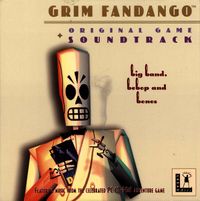
This inevitably caught the interest of Tim Schafer, who in 1995, was given the opportunity to do his first project as the sole creative director, Full Throttle, whereupon he invited McConnell to operate as the game's sole composer, the first solo project McConnell had managed to score in his time with LucasArts until that point. Naturally, writing the music for a game about bludgeoning biker gangs bludgeoning each other to near-death to uncover a greater conspiracy was something that deeply appealed to McConnell, and being inspired by Schafer's natural leadership and agreeable personality, he got right onto writing the pounding, hard rock score for the game, although he needed to find a band to play this music. Oh yes, Full Throttle was going down the route of full live instrumentation for its soundtrack, with an attempt to make a big label deal falling through due to budgetary misunderstandings, which McConnell described as a very good outcome since they instead discovered a smaller local band named The Gone Jackals, who were hired almost immediately. various tracks from The Gone Jackals' album Bone to Pick where chosen to be featured in the song alongside the original score composed by McConnell... not that said score can be found anywhere on Youtube. But this collaboration, along with its very prolific cast of voice actors, was a big gambit for a brand new IP, but the gambit proved to be a hit with the critics, as the game's authentic rock soundtrack was often cited as a major highlight of Full Throttle.[8] This would only be the start of a long, healthy working relationship between Peter McConnell and Tim Schafer.
Following this fun little dive into solo composition, McConnell occupied his time in the company continuing to do scores for the myriad of different versions of Star Wars: X-Wing that LucasArts pumped out at an accelerated rate each year. However, Tim Schafer once more got his thinking cap on and began work on a new game project inspired by Aztec afterlife mythology, Latin American culture, and classical film noir, a very absurdist assortment of themes that would be dubbed Grim Fandango, which released in 1998. Once more, Schafer sought the musical expertise of Peter McConnell, fully understanding the ludicrous demands the game's eccentric setting would place on the soundtrack, but McConnell amusingly didn't see anything particularly odd about the idea of "mariachi-infused jazz and orchestral music with some tribal Aztec instrumentation thrown in there" and got straight to work. This was most certainly one of the projects he felt a particularly strong connection with, having a deep-seated adoration for the jazz music stylings of Benny Goodman and Duke Ellington for much of his life that drove him to do the genre justice in Grim Fandango, and he composed many of the tracks with the intention of having as much live instrumentation as possible; indeed, he spent a lot of time in San Francisco's Mission District which housed many a club where musicians of all walks of life and styles of music often played, but McConnell was not just here to get inspiration. No, he was here to hire. Many of the live musicians featured on Grim Fandango's phenomenal score were assorted musicians who he met in the Mission District, who brought with them trumpets, violins, guitars, vihuelas... if it had anything at all to do with Latin music or jazz, you'd best believe it was featured.[9] Granted, not every part of the instrumentation was performed live, as more glaring orchestral segments proved costly to do and weren't sounding right with the hardware available at the time, which forced McConnell to settle for high-quality synthesised instrumentation instead. This was a compromise that plagued him to his very core right up until he got his chance to remaster the soundtrack in a fully live format alongside the Melbourne Symphony Orchestra (whom he had previously collaborated with on Broken Age[10]) when the game was remade in high-definition in 2015, creating what he believed truly matched what jazz is supposed to sound like.[11]

However, as adventure games fell out of favour towards the end of the 1990s, LucasArts were forced to lay off many of their key staff members as they went through a refocus away from the adventure game market and into more action-oriented titles. This resulted in Tim Schafer leaving the company in 2000, which naturally, also meant Peter McConnell left the team as well to operate as a freelance composer, although unlike Schafer, McConnell still kept a decent working relationship with LucasArts, contributing scores to Escape from Monkey Island in 2000, Star Wars: Battlefront in 2004, and much later in 2009, the special edition remake of The Secret of Monkey Island.[12] But while all this was happening, another sinister plot was brewing in the dark underbellies of the gaming world, as Tim Schafer had started up his own development studio Double Fine Productions, and had begun work on their debut title as early as 2000, a little game called Psychonauts. Schafer had invited McConnell to return once more to his side to relive the glory days of the Schafer-McConnell team[13], and it was a project whose setting and world was so diverse and surreal, that McConnell saw it as the perfect opportunity to flex a bit and show off the diversity of his style. For Psychonauts, McConnell wanted to create music that had an almost dreamlike, unreal tinge to it to reflect the majority of the game taking place in the minds of the characters, but also wanted to make sure each track reflected each character as closely as possible, which took him into the realm of Spanish folk, militaristic orchestral, electronic dance, circus music, and of course, spy music, which he considers his favourite piece in the entire game. The main campground music went through many iterations before Schafer and the rest of the team were happy with it, and it's become among McConnell's proudest accomplishments. Around this same time, McConnell was also doing the expansive score for Sucker Punch's sophomore release, Sly Cooper 2: Band of Thieves, which saw him expanding his jazz stylings even further into a sleeker, sometimes pounding spy motif, heavily inspired by the works of Henri Mancini, who most people know for doing the Pink Panther theme song[14]... although my absolute favourite track is Dmitri's Disco. Dat groove. Ultimately, Sly Cooper 2 ended up coming out in 2004, a year before Psychonauts, due to troubled production involved in the latter, but both had very critically acclaimed scores and saw McConnell taking full advantage of the new sound hardware available to him with the new generation of consoles, and he would be brought back for every subsequent Sly Cooper game, including the upcoming Sly Cooper film, which will be McConnell's first attempt at recording a film soundtrack.
Over the years, McConnell participated in evermore games from the mind of Tim Schafer and his colleagues, including the atmospheric music in the heavy metal tribute, Brütal Legend (although the main focus was on the myriad of licensed music they acquired from commercial artists) and Costume Quest, as well as multiple games outside of the Double Fine name, such as Kinectimals, Hearthstone: Heroes of Warcraft, and even Plants vs. Zombies: Garden Warfare, which stood out in McConnell's mind for being a far more joyous, perky synthpop project, allowing him to relive his old clubbing days in the 1980s when artists like Depeche Mode and The Human League were ubiquitous in the dance scene.[15] But the next big project for McConnell came with one of the most prolific Kickstarter games in history, Double Fine's Broken Age, which to this day remains one of the most successful Kickstarter projects encompassing... well, anything, not just games. The game was many years in the making, after a rather tortured development process, mismanaged funds, and... awkward Early Access release, but I'm not here to whinge about Schafer's poor crowdfunding ethics, but rather McConnell's stellar soundtrack, being the first project he would do with a full live orchestra, that being the Melbourne Symphony Orchestra.[16] Studying the classical works of Igor Stravinsky, Erik Satie, as well as the film composers Henry Mancini and Thomas Neumann, he set out to create a score that had an almost musical theatre sound to it, following a very rhythmic progression that almost, on its own, tells an expansive story. With an ever-changing set of locations in Broken Age, McConnell realised he had to be extra careful in how he structured the music so as to all fit together neatly while still reflecting the diversity present in the game's setting, so he split the score into "small ensemble" and "large ensemble," to help the score better mold itself to subtle and bombastic scenes. I'd argue this is among his best works just for how beautifully conceptual it is, and it's most certainly among McConnell's favourite pieces; individual tracks aren't available on Youtube, but a full soundtrack video most certainly is, so check it out if you have an hour to spare. It really is quite something.[17]
After all this time, McConnell continues to find new ways to expand his horizons and design dynamic, interactive soundtracks for his games, having both the musical knowledge and programming prowess to ensure his work ties into the gameplay and story as seamlessly as possible. With a very broad scope of influences, and a ridiculous range of instruments under his belt, McConnell really lives up to the work ethic I personally find most important in game composition; be as diverse and open-minded as possible. His dedication to the interactive audio arts resulted in him being a part founder of the Game Audio Network Guild (G.A.M.E.), an open network for game composers, both professional and amateur, and fans of game music to get together as a community and work towards improving game audio and composition.[18] As mentioned before, McConnell is currently working on the score for the upcoming Sly Cooper film later on this year, but he has also been brought back into Double Fine's studios to work on the recently-crowdfunded and long-awaited Psychonauts 2, which is predicted to be released in 2018.[19] Keep an eye out for these projects, they're sure to be a blast!
References
- ^ http://www.polygon.com/2015/10/2/9440551/polygon-wireframe-peter-mcconnell-grim-fandango-tim-schafer
- ^ http://www.thefourohfive.com/music/article/the-405-meets-peter-mcconnell-143
- ^ http://www.audiogang.org/interview-with-brutal-game-composer-legend-peter-mcconnell/
- ^ http://mixnmojo.com/features/sitefeatures/LucasArts-Secret-History-Monkey-Island-2-LeChucks-Revenge/9
- ^ http://www.1up.com/features/imuse-secret-organic-music
- ^ https://books.google.com.au/books?id=JYfROhvXMPAC&pg=PA87&dq=lucasarts+x-wing+game&hl=en&sa=X&ei=1t92UcPIEZLA4AOq2IGoBQ#v=onepage&q=lucasarts%20x-wing%20game&f=false
- ^ http://www.amazon.com/dp/B000J5N2OC
- ^ http://www.thefourohfive.com/music/article/the-405-meets-peter-mcconnell-143
- ^ https://web.archive.org/web/20070214102114/http://www.lucasarts.com/products/grim/grim_files.htm
- ^ http://www.polygon.com/2014/10/10/6960243/grim-fandango-remastered-ps4-pc
- ^ http://alternativemagazineonline.co.uk/2015/03/31/interview-in-conversation-with-peter-mcconnell-video-game-composer-and-musician-grim-fandango-remastered/
- ^ http://www.imdb.com/name/nm0566308/
- ^ http://www.gamestm.co.uk/interviews/10-years-of-psychonauts-in-conversation-with-tim-schafer/
- ^ http://www.lucasdelirium.it/petermcinterview.php
- ^ http://www.gameinformer.com/b/features/archive/2014/03/26/garden-warfare-composer-mcconnell-talks-music-zombie-children.aspx
- ^ http://www.doublefine.com/P30/
- ^ http://www.examiner.com/article/interview-with-award-winning-video-game-composer-peter-mcconnell
- ^ http://www.audiogang.org/members/petermc/
- ^ https://twitter.com/PeterNMcConnell/status/673008064388141056
Game Soundtrack Reviews
Written by: Time Turner (talk)
Soundtracks can become one of the most defining features of a game. They can set the mood for any scene, create grand landscapes or simple situations, and might survive long after the game. A good soundtrack should set the tone for the game during every happy, sad, scary, or silly event first and foremost. A great soundtrack can accomplish that and stand on its own as a separate entity. A fantastic game accomplishes all of that and lets the game stay memorable even when everything's been wrapped up, inspiring its listeners to share the game for others' pleasure. This is what I personally enjoy in a soundtrack, and what I think just about every soundtrack should strive for. Making sure it's appropriate for the game is what matters the most, but if the composers can make something that survives beyond that, it's all for the better. The soundtrack for today's focus, Undertale, is all of that and so much more.
Undertale is a role-playing game that's so fantastically charming in everything that it does, I fell in love with it. The main draw is that you're perfectly able to go through the game without killing anyone, and most of the time you can talk yourself out of the situation. You're also free to kill, if that's more to your liking. All of the characters are unique and memorable, the dialogue is hilarious, the story is engrossing, and if I talk any more, it'd be nothing but gushing. Is it perfect? Nope, but it can capture you to the point where it doesn't need to be perfect and you don’t care one bit. If that sounds even remotely interesting to you, pick up the game for yourself, because the less you know about anything and anyone, the better. This game is also basically a solo project from Toby Fox, best known previously for his work on several Homestuck albums and the EarthBound hack, The Halloween Hack. He didn't completely make the game on his own, some of the sprites were done by Temmie Chang and others, but Toby was responsible for writing, coding, designing and composing the game, and for that, I must commend him. I must especially commend him for his composing, because Undertale's soundtrack is easily one of the best I've ever heard.
To detail the soundtrack itself, it features 101 tracks from Undertale, and it is available on Steam, Undertale-soundtrack Toby Fox's Bandcamp, and the official Undertale website for $9.99 USD. As a note, the sites only list seventy-seven tracks, as the last few are major spoilers and you shouldn't go looking for them, nor will I mention them. However, take my word that they are worth waiting for. This OST includes just about every vaguely musical track from the game, including several ones that don't last more than twenty seconds. The majority of the actual songs are very retro-inspired, with an emphasis on "inspired": they have a couple of instruments that would be right at home on the SNES, but they also have decidedly modern instruments that any pre-1990 console could barely toot out. This emphasis on being inspired by the classics is more akin to Cave Story than 'Shovel Knight (which both have fantastic soundtracks). While Shovel Knight as a whole is dedicated to emulating the glorious games of the past, Undertale is content to look at what those games did right and build on top of that.
Take "Bonetrousle" as a prime example of the retro inspiration. It's a reprise of Papyrus' previous song "Nyeh Heh Heh!" which is such a delightful chiptune, but it's accompanied by thumping drums that give the song a strong amount of oomph to fit with the boss battle it accompanies. There's actually a transition from "Nyeh Heh Heh!" to its reprise; it comes out of nowhere, but it's done with perfect timing. True to the game's form of only taking inspiration as well, a lot of the tracks are very non-traditional in terms of a lot of other RPG's, both new and old. "Dummy!" hops into a swinging jazz tune, "Temmie Village" is a strange a capella, "Home (Music Box)" and "Memory" both take cues from a children's music box, "Dogsong" is a barking dog arranged into a song, "Death by Glamour" is incredibly synth-based, "Oh! One True Love" is a swooning ballad, and this text will go on if every example is listed. It definitely has its traditionally-RPG songs, such as the action-packed "Spear of Justice" and "Bird That Carries You Over A Disproportionately Small Gap", or the more mellow "Once Upon a Time" and "Alphys", but they're not unwelcome at all. Despite the insane variety and genre-swapping from song to song, none of it really feels out of place in the grand scheme of the whole game. More often than not, they're juxtaposed with whatever was playing before, but those juxtapositions are used to create a specific effect that pays off.
It's one thing to have great tracks, but Undertale does what every soundtrack should do and makes each and every track fit its setting with the appropriate amount of appropriateness. This is arguably one of the game's greatest strengths, as the tracks are able to not only match the tone of their scene, they enhance each scene to the point where the scenes and music become intertwined with one another, making the events unrecognizable without the tracks and making the music impossible to listen to without remembering what it accompanies. The bouncy, energetic "Bonetrousle" I talked about above fits perfectly with the bouncy, energetic Papyrus, as does the solemness of "Heartache" with Toriel's character and her situation, as does the gentle and simple nature of "Snowdin Town" with the sleepy yet upbeat town, as does the completely unassuming nature of Flowey the Flower presented by "Your Best Friend", as does the hecticness of "Dummy!" accompany the Mad Dummy battle greatly while also calling back to the theme of the similar Napstablook, "Ghost Fight", and so on and so forth. Music can be used to make an audience feel a certain way even when they're not expecting it, and Toby uses that fantastically.
Is the soundtrack perfect? Well, if I were to be completely honest, my only criticisms of the songs themselves would be minor nitpicks, and when I mean minor, I mean to the point where they're really not worth bringing up. Probably the least minor would be that "Bergentrückung" and its follow-up don't quite fit the character they play for, but they're perfect for the situation and are rocking otherwise. If I was talking about the complete soundtrack for purchase, there are two notable complaints. First of all, as I said previously, just about every clip that could be considered musical is in there, and this includes a lot of minor and short tracks. To name a few, "Dogbass" is a seven-second (funky, but still) song that plays for a one-off gag, "Unnecessary Tension" is a similarly short song that creates unnecessary tension for a one-off gag, and "Long Elevator" is literally the sound of an elevator running for twenty seconds which is used as a moment to take a breather. In the context of the game, there isn't a single track that isn't used effectively, but in a standalone soundtrack, they're not quite so effective. Secondly, many of the songs aren't looped even though they're designed with looping in mind, for long battles and long dialog and whatnot. As a result, they either end abruptly or fade out after what feels like a short time. I really wish that at least some of the songs went on for another couple of minutes, like they do in-game, but what we have is still amazingly memorable.
If you've made it this far, you may be tired of my gushing, but let me say frankly that none of my comments were exaggerations, at least from my point of view. As I said above, Undertale isn't perfect, but it resonated with me in a way that no game has ever done before. Its music is undoubtedly a large part of that, with so many tracks that are memorable and simply a blast to listen to. Each and every one of them only takes an instant to remind you of when they played and what they accompanied, and I can easily attest to that as I've been listening to the entire OST while writing this. I wrote this article with nothing but the memory that Undertale left me, and I think that's a fitting song for the game as a whole. Whenever a character thinks back to the past with a smile on their face, the simple music box tune of "Memory" starts to play. That's what I'll always believe in after some few years have passed: the good memories that I can always look back on. You may have noticed that I've played fast and loose with names and settings, and that's because I stand by the game being better if you go in while knowing nothing. If you've been convinced, there's also a free demo available on the official site. If nothing else, I hope that I convinced you to pick up the soundtrack; even without the game, it's still immensely enjoyable, but it becomes all the more better if it has context.
| The 'Shroom 106 | |
|---|---|
| Staff sections | Opening Statement |
| The 'Shroom Spotlight • Directorial Address | |
| Sub-teams | Fake News • Fun Stuff • Palette Swap • Pipe Plaza • Critic Corner• Strategy Wing |
| Specials | Ultimate Character Tournament |
| Closing Statement | |

